8 protein-packed plants to grow in the garden
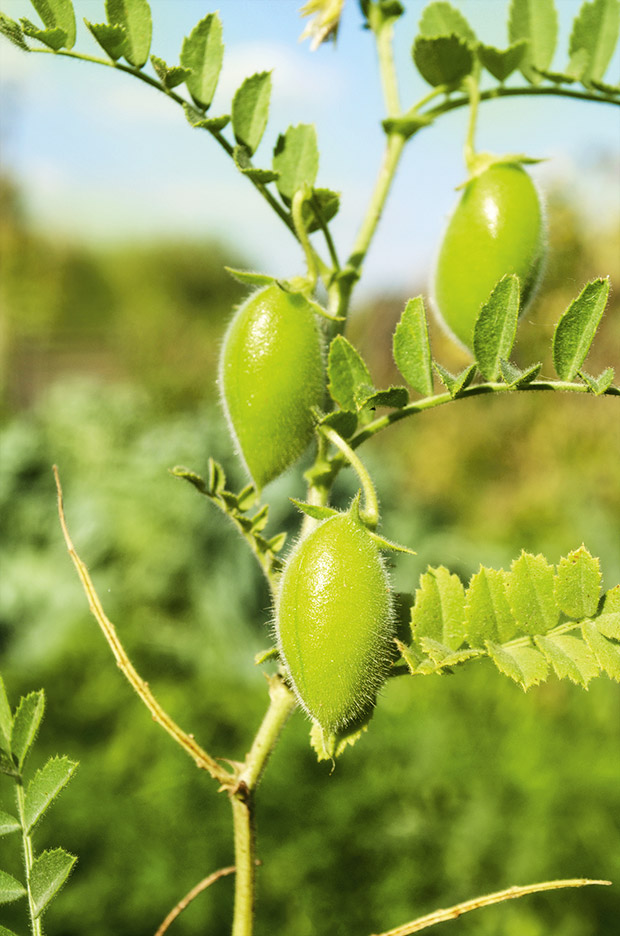
These plants are an easy source of nutritious protein and can be grown in most parts of the country.
Words: Jane Wrigglesworth
Plants are an excellent source of protein, and there are a wide range options to choose from. Here are some of our favourites:
1. Lentils
1 cup, cooked: 230 calories, 18g protein
Sow: late winter-early spring, autumn
Soil: free-draining
Lentils are a member of the pea family and a hardy annual. They grow 1-2 small, edible seeds in pods on tall, branched vines.
Sow: This cool-weather crop can be sown 2-3 weeks before the last frost in spring. Start them indoors for an even bigger jump on the growing season. If you live in a warmer area, you may need to wait until autumn.
A 1989 study in Canterbury found autumn sowings “have a higher yield potential than spring sowings due to increased radiation interception”.
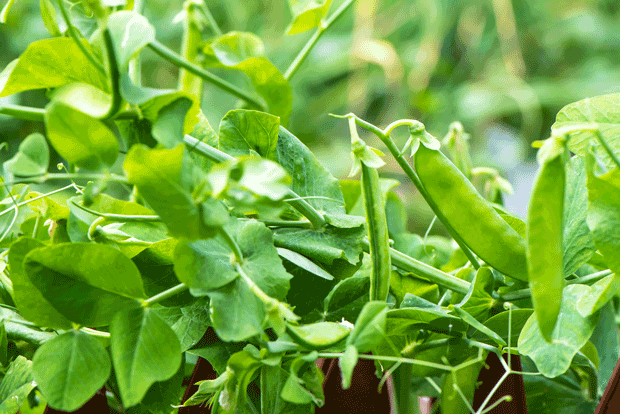
Plant lentils in full sun in free-draining soil. Sow 1cm deep, 2.5cm apart in rows 45-60cm apart. When the seedlings are 8cm, thin them to 10-12cm spacings. A low trellis is good support for plants as they grow.
Water evenly, but not excessively. When the pods start drying, stop watering.
Harvest: after 70-80 days for a snap pea-like crop. Wait until about 110 days if you want to dry them. Store in a dry, dark place.
2. Amaranth
1 cup, cooked: 251 calories, 9.3g protein
Sow: mid-late spring
Soil: preferably free-draining
Amaranth is easy to grow. It will self-seed if you don’t harvest the seeds for eating, and take over a garden space if not monitored. Each plant produces thousands of edible seeds – something like 60,000 – and young leaves are tasty in salads. Amaranthus caudatus (also called Love Lies Bleeding), Amaranthus cruentus (Crimson Fingers) and Amaranthus hypochondriacus are the ones grown for their high-protein seeds.
Amaranth stands out in a garden, literally. The tall plants grow to 1.2-2.5m high, and flower colours range from purple or deep red to yellow or golden brown.
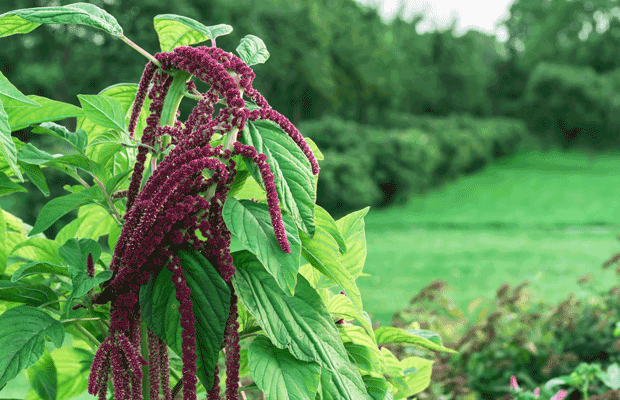
Plants need full sun and warm soil (above 18°C).
Sow: Sow from mid-to-late spring onwards. The seeds are small and best sprinkled or broadcast over soil, then pressed in. Don’t sow seeds any deeper than 5mm. When the seedlings reach 10cm, thin them to 30-40cm apart.
Amaranth is a low-maintenance, drought-tolerant plant; spring rains are generally sufficient to keep it watered.
Harvest: You can harvest after approximately three months. Shake the flower heads; if the seeds drop easily, they’re ready. Harvest on a fine day when the seeds are dry:
• bend the flower heads over a bucket, then rub and shake them briskly between your hands;
• sieve your harvest through a fine mesh screen to get rid of any debris, or use a fan or air compressor to blow away any chaff.
3. Quinoa
1 cup, cooked: 222 calories, 8.14g protein
Sow: spring
Soil: tolerant of most types but does best in free-draining soil
Superfood quinoa has become extremely popular in recent years and is now being grown commercially in NZ. It’s simple to grow, the leaves are edible, and it’s highly nutritious.
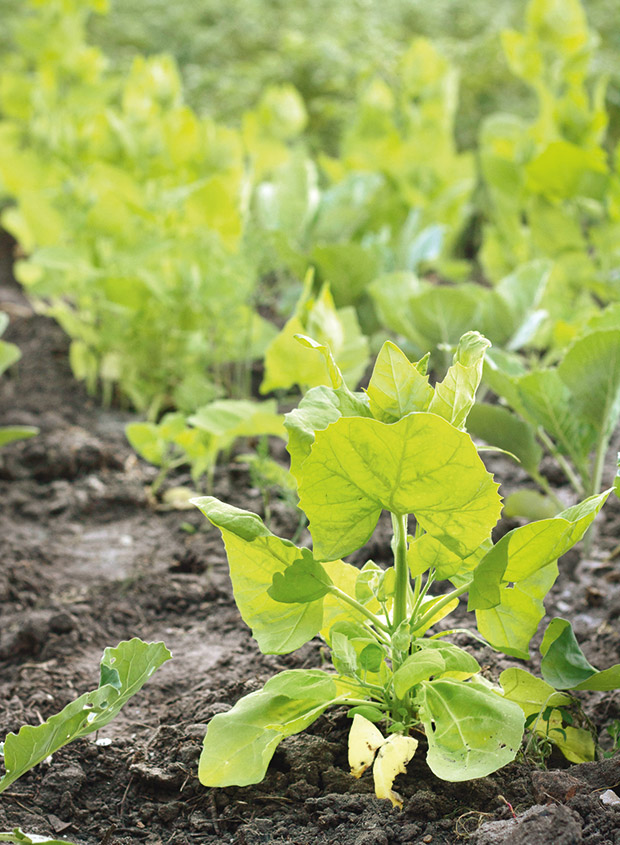
Quinoa prefers cooler weather. Regions with hot summers such as Hawke’s Bay may find it difficult as high temperatures stunt growth.
Sow: Sow in October when the soil temperature is around 15°C and all danger of frost has passed. Plants need full sun and moist soil. Broadcast or scatter seeds in rows 30cm apart. Cover very lightly with soil or press into the ground. When the seedlings reach 10cm, thin them to 25-30cm apart.
Harvest: Quinoa is ready to harvest when it sheds its leaves, 90-120 days after sowing. On a dry day, cut the seed heads into a bucket. Run the heads over a fine mesh screen to separate the seeds from debris.
4. Chickpeas
1 cup, cooked: 269 calories, 15g protein
Sow: spring
Soil: well-drained
These versatile legumes have a long growing season. They need at least 100 days to reach maturity and produce only one or two seeds per pod. Unless you’re planting a whole plot of them – and you’ve got space to spare – it might not be worth it. However, they are easy to grow.
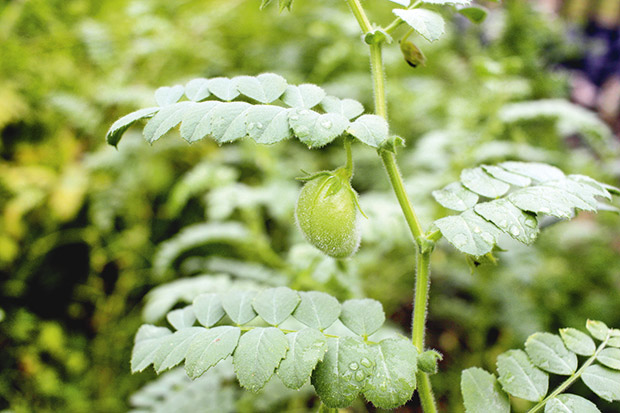
Plant near the end of the spring frost period. They will cope with light frosts, but keep them sheltered. They need full sun and well-drained soil.
Sow: Sow seeds 3.5cm deep, 15cm apart, in rows 45-60cm apart. A little crowding means the plants can support each other. Water regularly but be careful not to overwater. Plants grow 45-70cm tall.
Harvest: When the pods are green and immature, they can be harvested and eaten like snap peas. Once the leaves turn brown, harvest the whole plant. Lay out to dry and collect the dried seeds when the pods split.
5. Adzuki beans
1 cup, cooked: 256 calories, 15g protein.
Sow: spring
Soil: free-draining
This ancient legume produces long pods with small, reddish-coloured beans with a slightly sweet, mildly nutty flavour. They need a long season – 120 days – so if you live in a place with a shorter growing season, start seeds indoors.
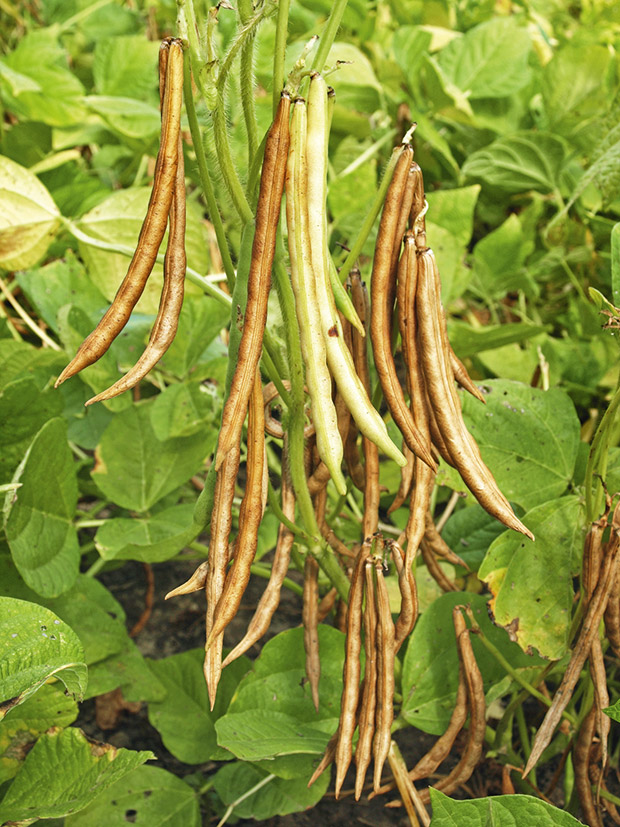
Some garden writers tell you adzuki shouldn’t be transplanted, but I’ve found they don’t seem to suffer, and you avoid issues with snails and slugs eating the emerging seedlings.
Sow: If sowing directly, do it when the soil is above 15°C. Pick a spot in full sun, and sow 3.5cm deep, 55cm apart. Water regularly, keeping the soil moist but not soggy as the seeds may rot. Seedlings should emerge in 10-12 days.
Harvest: The pods are ready to harvest when the seeds are just showing inside. Eat fresh, like a snap pea. To harvest the mature beans, wait until the plants turn brown, and the seeds are hard inside the pods. The entire plant can be cut down and left to dry in a well-ventilated area. When the pods are completely dry, open them up and harvest the beans.
Tip: The beans are good in soups and casseroles. In Japan, they’re boiled, mashed, and sweetened with sugar to make a jam-like paste.
6. Soybeans
1 cup, cooked: 298 calories, 28g protein
Sow: early spring
Soil: fertile, well-drained
The soybean is a bushy, rather whimsical-looking plant. It grows to about 90cm, and the branches spread out like wispy tentacles. The pods are 3-10cm long, holding 2-4 seeds each. Soybeans reach maturity in around 100 days.
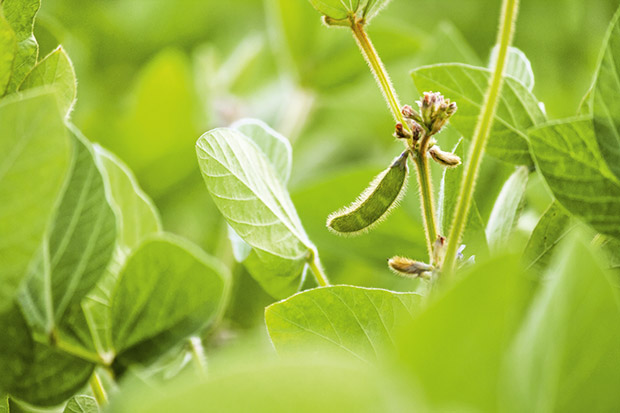
It’s not easy to find seeds in New Zealand:
• Kings Seeds has Sonya (limit 3 packs per person)
• Koanga Gardens has Lammer’s Black (a good bean for areas with short seasons, and the traditional bean used to make black bean sauce), available to members only.
You can also find unnamed varieties available on Trade Me from local growers.
Sow: Plant seeds in early spring as soon as the soil is 15°C, or sow in trays for transplanting later. Plant at 20cm spacings in full sun in rich, well-drained soil. Water regularly, but don’t let the soil get soggy.
Harvest: You can harvest soybeans when they are half mature as ‘edamame’. The pods will be green and plump at around the 45-60-day mark, depending on the variety. Leave them on the bush for another 60 days for dried shell beans. Harvest the whole plant on a dry day (cut plants at the base) and hang in a dry, cool place.
Don’t eat soybeans raw as they can upset your stomach. Always blanch or boil them first.
7. Cowpeas
1 cup, cooked: 199 calories, 13.3g protein
Sow: late spring
Soil: any
Also called field peas or black-eyed beans, cowpeas (Vigna unguiculata) are, in fact, beans with a distinctive spot or black ‘eye’. They’re not to be confused with the black-eyed pea – also a bean – which is a subspecies of the cowpea. The cowpea supposedly got its name because it was used as fodder for cows.
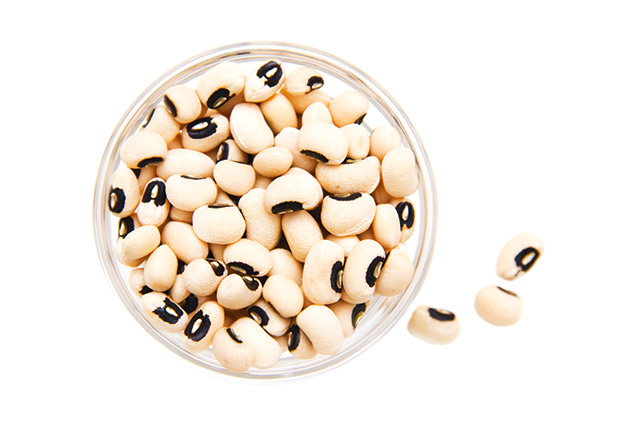
It’s quite hard to find seeds, but there are some around. Southern Seed Exchange has them, as do Sue and Nev Sinclair from the Sentinels Group.
Sow: Cowpeas are resilient and grow well, even in poor soil. They need around 80-90 days to reach maturity but are ready for picking as green pods around 60 days. Bush varieties grow about 30cm tall.
Plant in full sun, 3-4 weeks after the last frost of spring. Water regularly and consistently. Cowpeas are heat and drought-tolerant but do best if they get a regular drink.
Harvest: When the green pods are young, you can pick and eat them as green beans. They’re ready to harvest as dried beans when the pods turn brown and the vine begins to die. Pick before the pods start splitting. Shell beans and lay out to dry completely before storing, or they may develop mould.
8. Peanuts
½ cup, raw: 427 calories, 17.3g protein
Sow: late winter, indoors
Soil: well-drained
Peanuts are highly nutritious, delicious, and easy to grow. Their only special requirement is a long growing season, around 120 days. Plants can handle some light frosts, so don’t be put off if you have a shorter growing season.
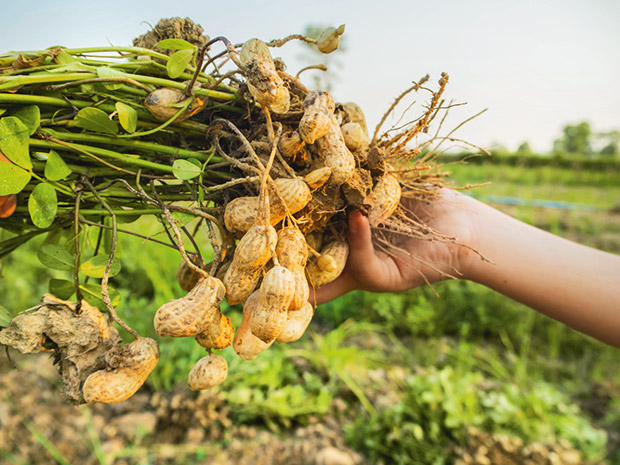
You can buy raw peanuts still in their red husk and plant those, although your strike rate may be low if they’re old. There are people selling seed peanuts on Trade Me, and Kahikatea Farm sells some named varieties. You’ll need 10-12 plants per person.
Sow: Start seeds indoors a month before the last frost for a mid-spring planting. Plant, or transplant, when the soil temperature is above 15°C. Sow seeds 3cm deep, 25cm apart, 60cm between rows. They need full sun and well-drained soil.
The nuts grow underground from long, pointed pegs, or stems, called peduncles. These grow out from the faded flowers, digging down into the soil, like pegs. Hill soil around the base of the plants when they reach 30cm tall, so the peanuts have space to spread out in the ground. Plants typically grow around 45cm high.
Harvest: The nuts are ready when the leaves turn yellow, and you see gold-looking veins inside the shells. Check a couple of plants before pulling everything out. The peduncles will get brittle and break off in the ground if you wait too long, which makes harvesting more difficult.
Once they’re ready, dig up all the plants and roots when the soil is moist (it’s easier) and hang them up to dry. When the leaves start to crumble, remove the pods and store them where they can dry out.
MORE HERE
10 unusual edible perennials grown at a permaculture farm near Hastings
Love this story? Subscribe now!
 This article first appeared in NZ Lifestyle Block Magazine.
This article first appeared in NZ Lifestyle Block Magazine.
